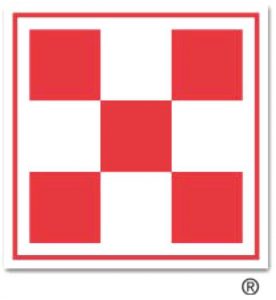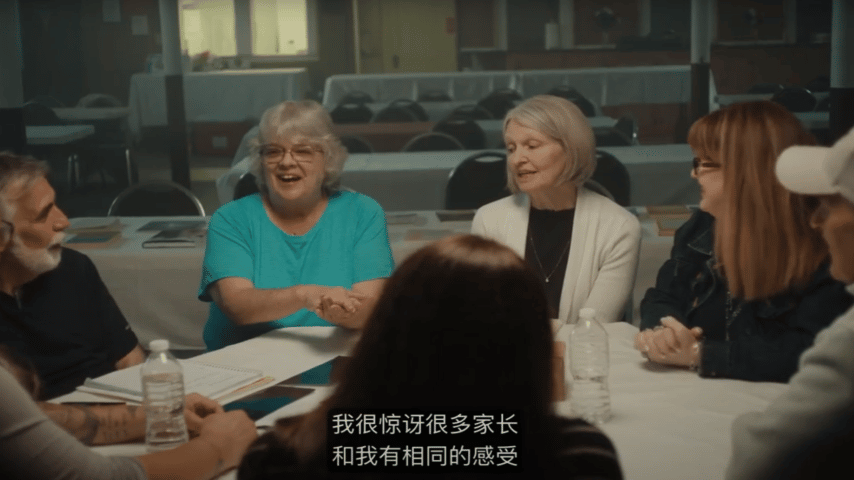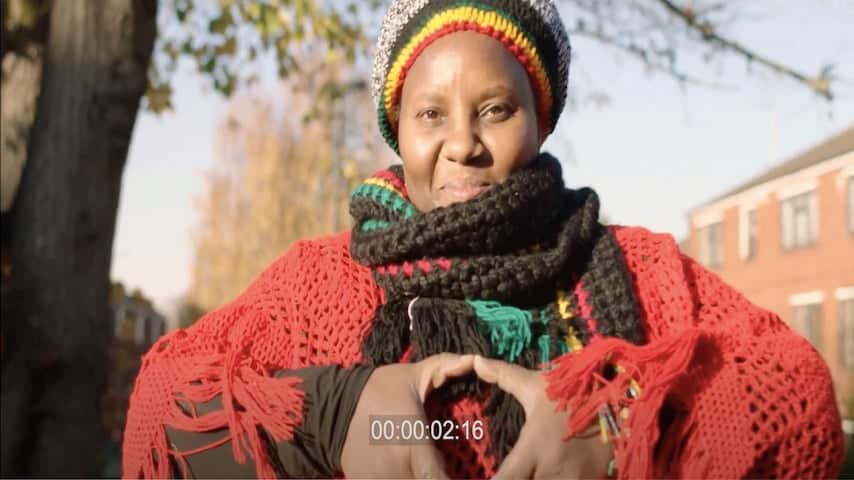Expert French Canadian Subtitling Services
At GoLocalise, we provide high-quality French Canadian subtitling services, ensuring your content resonates with audiences in Québec and French-speaking communities across Canada. With over 7 million native speakers, accurate subtitling is essential for clarity, engagement, and accessibility. French Canadian features unique expressions, pronunciation, and regional variations that distinguish it from European French, requiring careful adaptation to maintain authenticity.
Our team of native French Canadian subtitlers ensures subtitles are linguistically precise, culturally relevant, and easy to read. Whether you’re working with corporate training materials, eLearning courses, TV series, films, or digital content, we craft natural, engaging, and locally adapted subtitles. We also adjust sentence structure, terminology, and phrasing to reflect the tone and style that best fits Quebecois audiences.
Golocalise are our supplier of choice for all our subtitling and transcription needs. After years of hassle trying to do it all in-house we have found their service to be a revelation in terms of speed, flexibility and costs. Their team is extremely responsive and can always turnaround requests, in any language, within our short deadlines. We can confidently rely on them to provide any deliverables without ever worrying about the accuracy of the subtitling.
Specialised French Canadian Subtitle Localisation
Our French Canadian subtitle localisation services are designed to help businesses and content creators connect with Quebecois and French-speaking Canadian audiences. Whether for entertainment, corporate communications, education, or online media, our subtitles enhance comprehension and accessibility. We also provide French Canadian captioning services, ensuring inclusivity for viewers who are deaf or hard of hearing.
Explore Our French Canadian Subtitling Expertise:
Film and TV Subtitling: Expertly adapted subtitles for films, TV shows, and documentaries, ensuring that Quebecois expressions and humor feel natural.
Corporate and Business Subtitling: Professional subtitles for training materials, company presentations, and internal communications, ensuring clarity and cultural accuracy.
eLearning Subtitling: Subtitles for educational content, instructional videos, and online courses, making complex topics accessible to French-speaking learners in Canada.
Marketing and Advertising Subtitles: Localised subtitles for advertisements, promotional campaigns, and brand storytelling, tailored to the preferences of Quebec consumers.
Social Media and Online Content: Subtitles optimised for YouTube, Facebook, Instagram, and streaming platforms like Tou.TV and Illico, maximising engagement.

From short digital clips to full-length productions, we ensure that French Canadian subtitles are accurate, engaging, and adapted for cultural relevance, providing an authentic experience for Quebecois audiences.
Benefits of Using GoLocalise as Your Subtitling Service Provider
- Impress your clients with high-quality English and foreign language subtitles that enhance their viewing experience.
- Rigorous quality control ensures all templates are created and checked in-house, meeting accuracy and professional timing standards.
- Industry leading subtitling software guarantees perfectly timed subtitles, carefully positioned around shot changes for seamless integration.
- Skilled native subtitlers accurately translate meaning while maintaining style, readability, and space constraints.
- Experienced project managers perform thorough quality checks to ensure flawless final delivery of your subtitles.
- Ready-to-use videos with translated burnt-in subtitles (open captions), fully prepared for upload to your website, with customisable font, size, colour, and positioning.
- Multi-language closed captions can be switched on or off across platforms like YouTube, Vimeo, Netflix, Amazon Prime, Disney+, social media, and other streaming services, as well as for DVD and Blu-ray content.
- On-screen text and captions can be translated and graphically edited to create a polished multilingual video version.
- Closed Captions and SDH subtitles make your content accessible to a wider, more diverse global audience.
Whether your project involves short promotional content or full-length feature films, we handle it with the utmost precision and professionalism. For time-sensitive projects, we offer expedited services without compromising on quality.
Let's get started!
The Subtitling Process In A Nutshell
Send us your video file in any format. We’ll ensure it’s compatible with our subtitling software. If you’re unsure about the format, feel free to double-check with us.
We’ll create an English subtitle template, which is crucial if the subtitles will be translated into multiple languages.
We’ll send the English template to our professional linguists, who will translate it into the requested languages with precision.
Once translated, we’ll import the subtitles into our software. We’ll perform quality checks to ensure proper timing, reading speeds, and line lengths.
We’ll share the subtitles with you for review. Let us know if any changes are needed, and we’ll make adjustments while adhering to technical requirements.
After final approval, we’ll burn in the subtitles (if requested) and deliver the completed video through your preferred file-transfer method.
Why Choose Us?

You deserve the best! Leave your project to the experts at GoLocalise so that you can relax and be assured of getting top-notch results.
Every single detail will be analysed, studied and looked after so that you do not need to worry. Some would say it’s not too classy to blow our own trumpet… but we just like to point out two very important details.
We have achieved ISO 9001 Quality Management certification in recognition of our consistent performance and high standards, and ISO 14001 Environmental Management because we care about our planet! And if you are still curious and want to know more about us, why not have a look at our studio page.
Let's get started!
The Impact of French Canadian Subtitles
Incorporating French Canadian subtitles into your content is an essential strategy for broadening audience reach, improving accessibility, and establishing a strong brand presence within Quebec and other French-speaking regions of Canada. By localising your subtitles to match linguistic and cultural expectations, your content can effectively engage a diverse and growing audience. Key benefits include:
Increased Accessibility: Making content inclusive for French Canadian audiences, including those with hearing impairments and non-native French readers.
Higher Viewer Engagement: Subtitles keep audiences engaged and enhance comprehension, particularly for complex or fast-paced content.
Enhanced Online Visibility: Subtitled videos rank higher on Google and Quebec-based search engines like Qwant and Canoe, improving discoverability.
Expanded Market Reach: Localised subtitles allow brands to connect with Quebecois audiences, strengthening presence in Canada’s French-speaking regions.
Better Social Media Performance: Subtitles drive higher engagement, shares, and viewing time, especially on platforms where muted autoplay is common, such as LinkedIn and Instagram.

With French Canadian subtitles adapted to linguistic and cultural preferences, your content becomes more engaging, accessible, and impactful for local audiences. By integrating Quebecois expressions, idioms, and sentence structures, we ensure that subtitles feel natural and immersive. This localisation process helps content resonate with native speakers, fostering stronger audience connections and improving the overall viewing experience across diverse media formats.
Professional Subtitling Formats
Whether you need English subtitles or foreign language subtitles, GoLocalise has you covered! We can adapt your existing translations into subtitle format or create subtitles from scratch in any language, including English subtitles and SDH (Subtitling for the Deaf and Hard of Hearing).
You can receive your subtitles in a wide range of professional formats, ensuring compatibility with streaming platforms, broadcast, social media, corporate videos, DVDs, and Blu-ray.
- Open Captions – Ready-to-use videos with burnt-in subtitles, fully prepared for upload to your website. You can customise the font, size, colour, and positioning to match your branding.
- Closed Captions – Subtitles that can be switched on and off in multiple languages. Easily upload them to YouTube, Vimeo, streaming platforms, DVD, or Blu-ray.
- Standard Text-Based Formats – Widely used and compatible with most platforms, including SRT, VTT, SSA, ASS, and SUB.
- Broadcast & Professional Formats – Ideal for TV, film, and high-end productions, such as STL, SCC, EBU-TT, and DFXP.
- DVD & Blu-ray Formats – Designed for optical media, including VobSub (SUB/IDX), SUP, and PGS.
- XML-Based & Proprietary Formats – Used in specialised workflows, such as TTML, DFXP, and Spruce STL.
We collaborate with you every step of the way to deliver high-quality, precisely timed subtitles that seamlessly integrate with your content. Whether for streaming, broadcast, corporate videos, or multilingual accessibility, we ensure your subtitles are accurate, well-timed, and perfectly tailored to your audience’s needs.

French Canadian Subtitling with Cutting-Edge Technology
At GoLocalise, we combine linguistic expertise with cutting-edge subtitling technology to create clear, accurate, and culturally authentic French Canadian subtitles. Quebec French has a distinct vocabulary, pronunciation patterns, and a unique balance between formal and informal expressions, making expert localisation crucial for ensuring subtitles feel natural, fluid, and engaging. Our workflow includes:
Cutting-Edge Subtitling Software: High-quality tools for precise timing, formatting, and readability.
Native French Canadian Linguists: Skilled subtitlers ensuring natural, culturally adapted translations.
Comprehensive Quality Control: Rigorous proofreading and editing to maintain clarity, accuracy, and consistency.
Additionally, we tailor subtitles for Netflix, Club Illico, Crave, YouTube, and corporate e-learning platforms, ensuring smooth integration across all distribution channels. Our expertise guarantees that subtitles maintain perfect synchronisation, readability, and contextual relevance, regardless of platform or media format.
Cultural Adaptation in French Canadian Subtitling
Effective subtitling is more than translation—it requires localisation to ensure French Canadian audiences receive a natural, engaging, and immersive viewing experience. Well-localised subtitles capture Quebecois expressions, humor, and language preferences, maintaining the authenticity of the original content. Our localisation approach includes:
Cultural Accuracy: Refining idioms, slang, and humor to align with French Canadian audiences.
Adapting Tone and Register: Ensuring subtitles match the appropriate level of formality or informality based on content type.
Regional Sensitivity: Adapting language to reflect distinct Quebecois phrasing and terminology, ensuring clarity and relatability.
Through expert localisation, we go beyond basic translation, ensuring a seamless, natural, and culturally rich viewing experience that truly speaks to Quebecois audiences. By incorporating regional expressions, adjusting syntax for readability, and refining tone to match local preferences, we create subtitles that feel effortless and fully immersive for native speakers.


Why Partner with GoLocalise for French Canadian Subtitling?
Choosing GoLocalise means partnering with a subtitling agency that prioritises precision, cultural authenticity, and client satisfaction, ensuring that every project is tailored to the needs of Quebecois audiences. Here’s what makes us stand out:
Native French Canadian Subtitlers: Experts in Quebecois language, culture, and industry-specific content.
Tailored Subtitle Solutions: Customised services to meet your content’s style, audience, and objectives.
State-of-the-Art Technology: Advanced subtitling tools for seamless formatting and readability.
Fast & Reliable Turnaround: High-quality subtitles delivered on time, even for urgent projects.
At GoLocalise, we craft French Canadian subtitles with linguistic precision, cultural fluency, and audience engagement to ensure your content resonates with French-speaking viewers across Canada. Whether for entertainment, education, or business, our expertise helps strengthen audience connections and improve the viewing experience.
Learn more about Subtitling Services
Let's get started!
What our happy customers say
Jo Samuel
Animator at Pixel Circus

Josie Gallo
Content Co-ordinator at Medical Aid Films
Philippa Strandberg-Long
Deputy Course Leader - Acting, Italia Conti
Stefanie Smith
Producer at Education First

Nicola
English UK Voice Over Talent
Lucas Cole
Sales and Marketing Director at Epipheo

Price Match Promise
Challenge Our Prices, Enjoy Our Quality
























